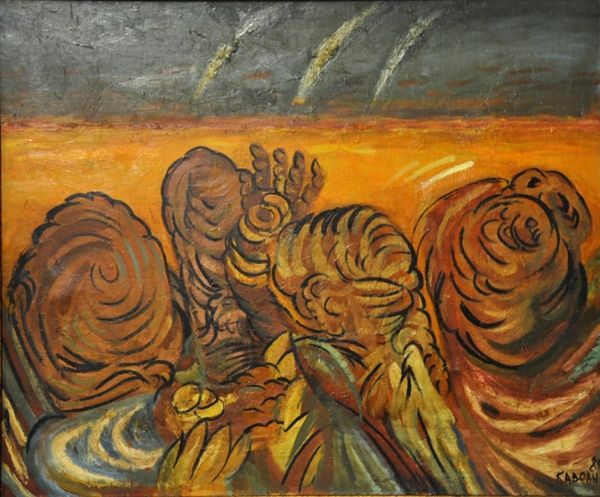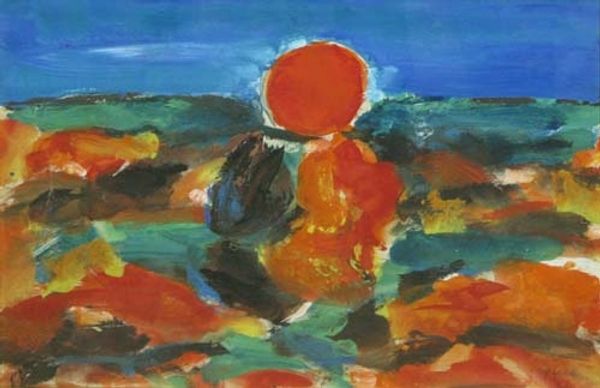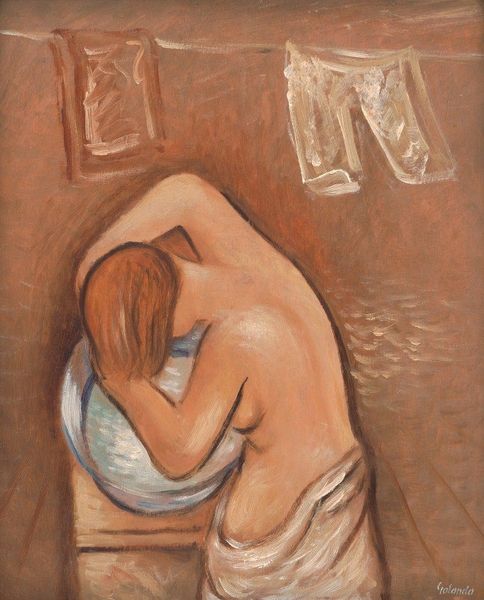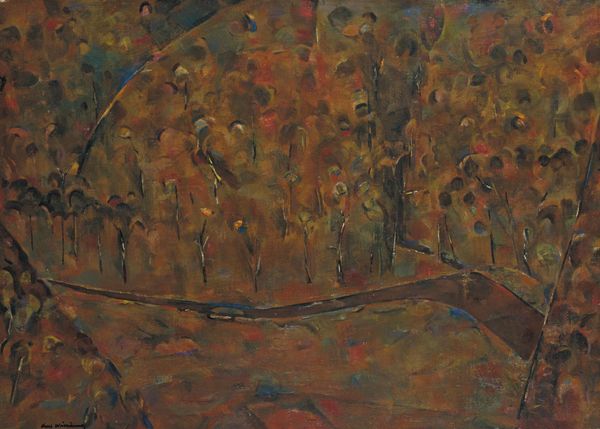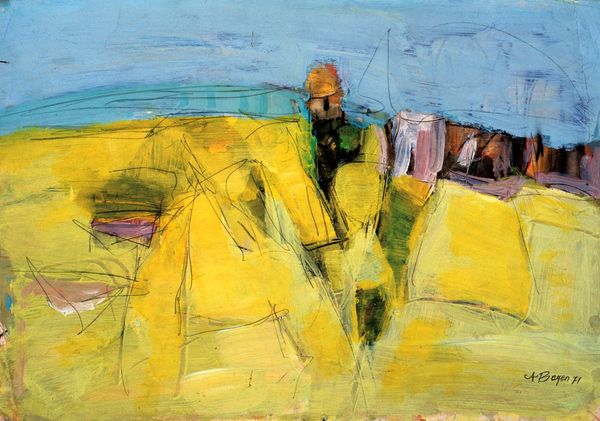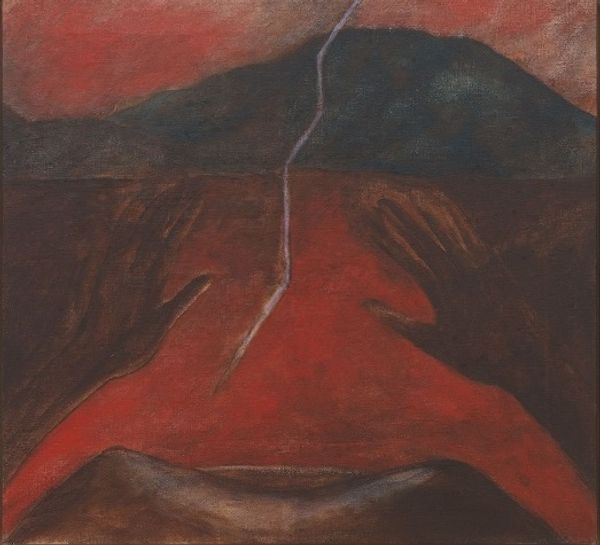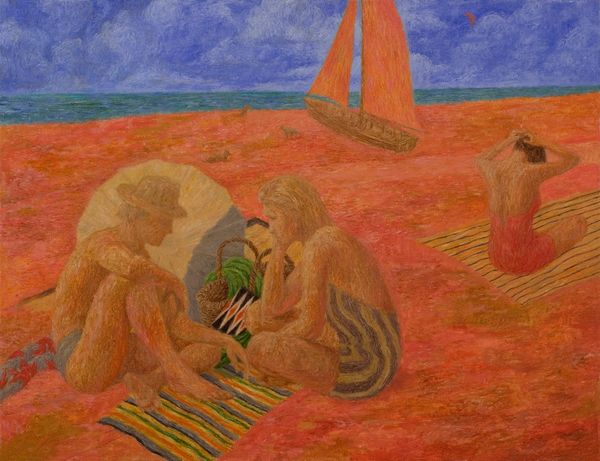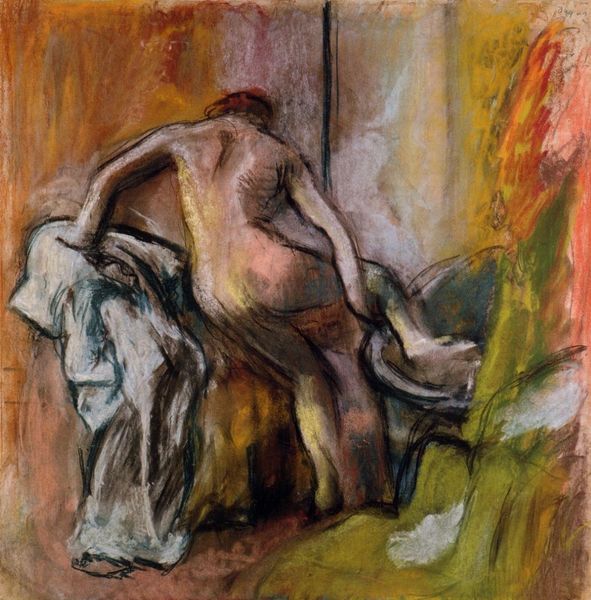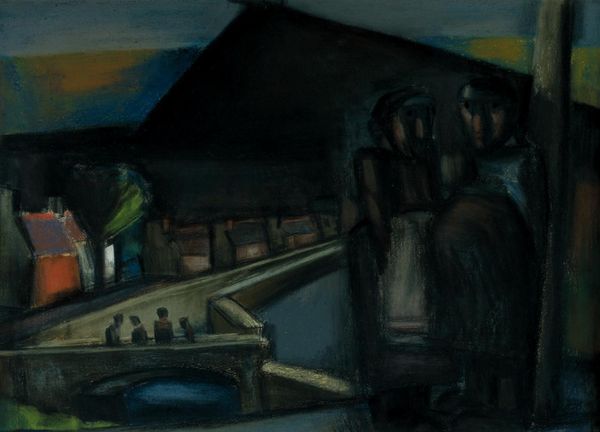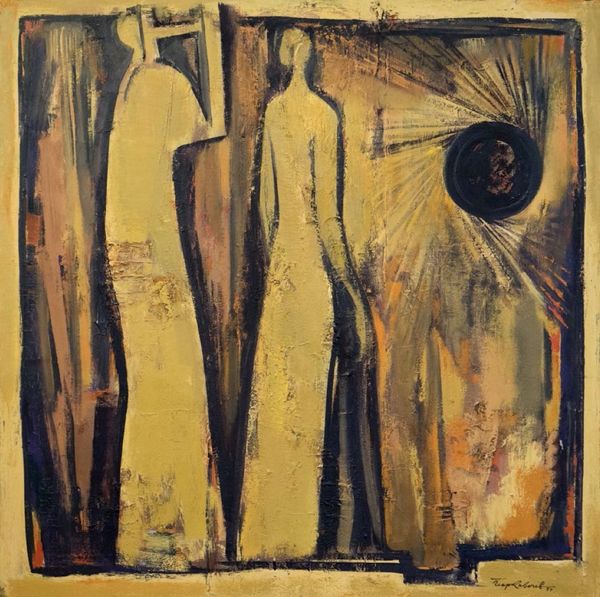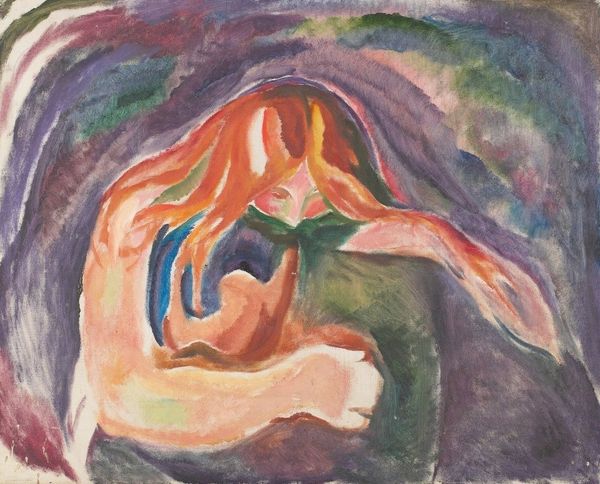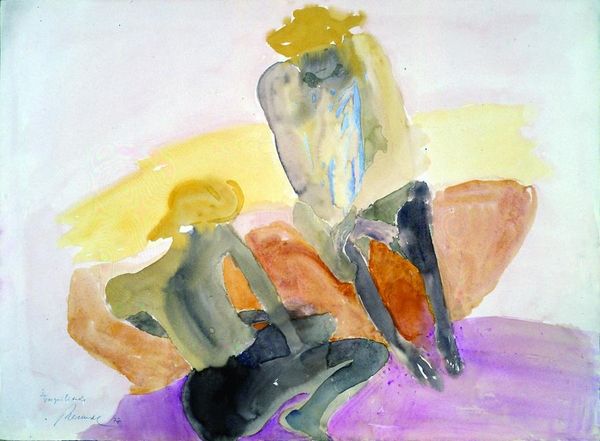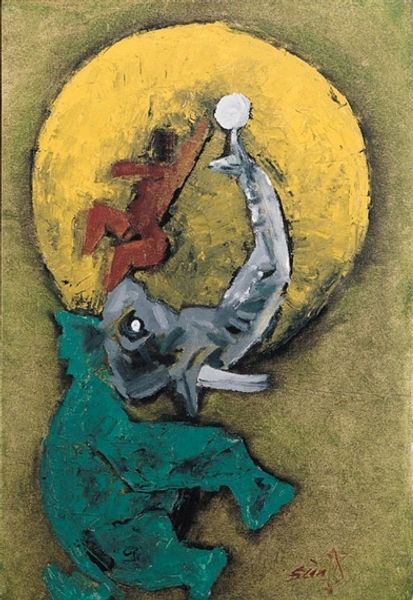
painting, oil-paint
painting
oil-paint
landscape
figuration
oil painting
genre-painting
italian-renaissance
modernism
realism
Copyright: Ottone Rosai,Fair Use
Editor: This oil painting is titled "Contadini," by Ottone Rosai. There's no date listed. What strikes me is how grounded it feels. The landscape is simplified, almost abstracted, but the figures of the farmers really convey the physical demands of labor. How would you interpret this work? Curator: This image invites us to consider the relationship between artistic representation and social reality. Rosai painted this during a time of intense social and political upheaval in Italy. He was briefly associated with Futurism before developing his own more figurative style. How do you think the historical context might shape our understanding of this piece? Editor: Perhaps it’s romanticizing rural life? Or maybe highlighting the dignity of the working class, in contrast to the industrial focus of Futurism? Curator: Both valid observations. But looking at the way Rosai depicts these figures, their bodies almost merging with the earth, suggests a deeper engagement with ideas of labor and identity. The palette itself – the ochres and blues – anchors the scene firmly in a specific geographic and social reality. Do you think the art world, including galleries and museums, might impact this work today? Editor: It’s hard to ignore. These works are acquired and put in museums for specific purposes. They are presented in very intentional ways. But do you think the figures would have held any symbolism for the working class at the time? Curator: They offered a view of themselves and a validation of the worker. Ultimately, Rosai offers a reflection on the Italian landscape, identity, and the socio-political forces shaping them, sparking conversation still today. Editor: I see that more clearly now, especially the artist’s choice to blend modernist abstraction with representational figures to capture the landscape and labor. Curator: Absolutely. These sorts of works become social documents; in essence they offer an ongoing critical lens to consider our past and reflect on the values museums choose to highlight today.
Comments
No comments
Be the first to comment and join the conversation on the ultimate creative platform.
